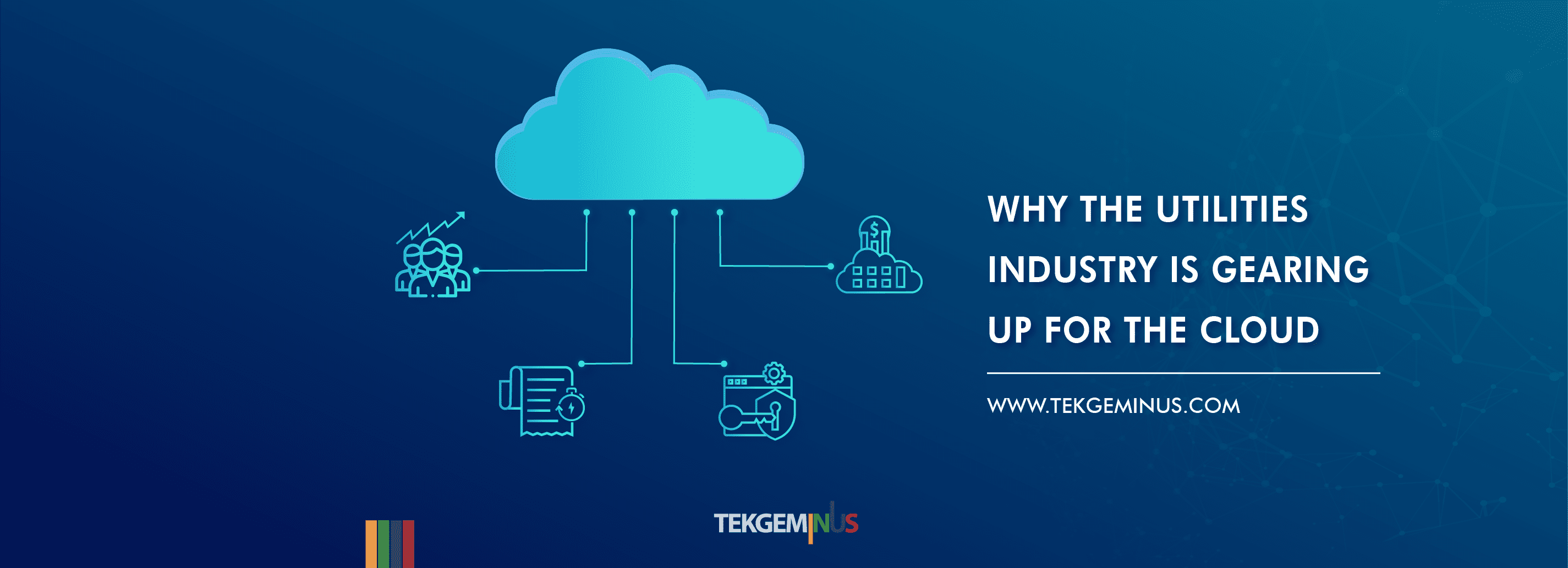Like other sectors, the Energy & Utilities (E&U) sector is also witnessing challenges and one of the ways to address the challenges is ‘showing non-resistance to change’. The changes are inevitable, as the web has also evolved from Web 2.0 (in the 1990’s) to Web 5.0 (the emotional web) and further!
Customer expectations from the utilities sector is also evolving, as they have a yardstick for comparing ‘experiences’ with other sectors. The age-old infrastructure might not be suitable to meet the changing consumer demands. Utility companies have to embrace agility while ensuring that there is an improvement in the efficiency.
We highlighted Cloud Computing as one of the top trends that will shape the utilities industry in 2020 and beyond. Here, we look at the major factors that indicate why cloud computing & utility industry are a match made in Heaven.

Customer expectations from the utilities sector is also evolving, as they have a yardstick for comparing ‘experiences’ with other sectors. The age-old infrastructure might not be suitable to meet the changing consumer demands. Utility companies have to embrace agility while ensuring that there is an improvement in the efficiency.
We highlighted Cloud Computing as one of the top trends that will shape the utilities industry in 2020 and beyond. Here, we look at the major factors that indicate why cloud computing & utility industry are a match made in HeavenJ.
Improved Scalability and Reliability
The game of IT infrastructure has also changed with companies opting to reduce reliance on in-house infrastructure and cloud computing is becoming more significant for the utilities sector. The traditional in-house IT infrastructure not only requires regular maintenance but also offers less scalability.
On the other hand, cloud computing systems offer better reliability and scalability. All you have to do is choose the right provider, appropriate pricing plan, and suitable deployment model (hybrid, multi-cloud, etc.) to get started with the migration.
With cloud computing, utility companies can minimize power disruptions (or plan in a much better way) and minimize resource wastage. The on-field personnel are provided with advanced tools that can be useful in fixing issues with minimal efforts, thereby improving their productivity.
A solution like Oracle CC&B (Customer Care and Billing Solutions) that is tailor-made for the utility sector lets you upgrade quickly and reduces the total cost of ownership. It is available in the on-premise and cloud options, which means that the ‘incremental’ migration to cloud is available for utility companies.
Reduced CAPEX and OPEX
Like other sectors, there is a pressing need for players in the utility industry to become more agile and efficient. Utility companies can drive capital efficiency whilst improving performance by leveraging cloud computing.
As cloud providers have a pay-per-use pricing model, shifting to the cloud helps the utility players reduce the CAPEX (Capital Expenditures) and control the OPEX (Operational Expenditure) in a better way. Solutions that have scalable options for industrial, residential, and commercial customers can be useful for expanding service offerings across the different categories in the utility segment.
Cyber Security
Businesses in different sectors like online commerce, EdTech, etc. have leveraged the advantages offered by cloud computing to become operationally effective whilst enabling new workforce mobility. The migration from in-house IT infrastructure to the cloud also helps in minimizing service downtime and avoiding data losses.
Along with modernizing the operations for better efficiency, cloud computing offer better security and improved reliability which ensure that their infrastructure and devices are secure from malicious attacks. Cloud computing enables companies in the utility sector to adhere to risk, compliance, and governance requirements in a more stringent manner.
Analytics to accelerate decision-making
As customer expectations are evolving, it becomes essential for utility companies to build analytical capabilities for making intelligent business decisions and offering a better customer experience. Big-data analytics requires high performance computing, a requirement that cannot be realized on legacy IT infrastructure.
Data analytics offered by the cloud platforms helps in accelerating the utility provider’s journey to cloud analytics. Oracle CC&B, a highly scalable CIS (Customer Information System) for the utilities sector provides integrations with the Oracle Utilities Suite that include metering, grid, and analytics solutions[1].
Conclusion
Disruption is a growing challenge for the organizations in the utilities industry and reluctance to change can impact them in a big way. Shifting to cloud offers long-term benefits such as scalability, reliability, and security. Players in the utility sector should expedite migration to the cloud for attaining operational efficiency and improving services to reduce customer churn-rate.
[1] http://www.oracle.com/us/industries/utilities/utilities-customer-care-billing-ds-2281135.pdf



